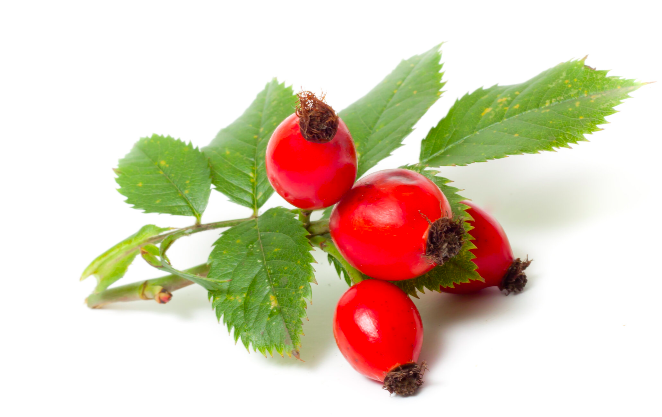Can nutrition influence EIPH? - alternative and supportive therapies as trainers seek to find other means of reducing the risk or severity of EIPH
By Catherine Rudenko
EIPH (exercise-induced pulmonary haemorrhage) was first identified in racehorses in the 16th century. Since this time, the focus has been on mitigating the haemorrhage. Management of EIPH largely revolves around the use of furosemide, dependent of jurisdiction, may or may not be used on the day of racing. Alternative and supportive therapies are becoming increasingly popular as trainers seek to find other means of reducing the risk or severity of EIPH.
Nutrition and plant-based approaches are part of an alternative management program. Whilst research is somewhat limited, the studies available are promising, and no doubt more work will be done as using furosemide becomes more restricted. There are several directions in which nutrition can influence risk for EIPH, including inflammatory response, blood coagulation, cell membrane structure, hypotension and reducing known lung irritants.
The various approaches are all supportive, working on altering an element of risk associated with the condition. Some are more direct than others, focusing on the effect on red blood cells, whilst others work on some of the broader lung health issues such as reducing mucus or environmental irritants.
None are competitive with each other, and there may be an advantage to a ‘cocktail’ approach where more than one mode of action is employed. This is a common practice with herbal-based supplements where the interactive effects between herbs are known to improve efficacy.
Cell membrane
The red blood cell membrane—the semipermeable layer surrounding the cell—is made up of lipids and proteins. The makeup of this membrane, particularly the lipid fraction, appears to be modifiable in response to dietary fatty acids. Researchers feeding 50mls of fish oil found a significant increase in the percentage of omega-3’s in the cell membrane.
Essential fatty acids (EFA’s), omega 3 and omega 6, are important cell membrane components and determine cellular membrane fluidity. Fluidity of a cell membrane is important, particularly when pressure increases, as a cell membrane lacking in fluidity is more likely to break. A cell that can deform, effectively changing rather than breaking, has an advantage and is linked with improved exercise performance in human studies. Inclusion of fish oil in the diet increases the ability of red blood cells to deform.
Kansas State University investigated the effect of omega supplementation on 10 thoroughbreds over a five-month period. The diet was supplemented with either EPA and DHA combined, or DHA on its own. EPA (eicosapentaenoic acid) and DHA (docosahexaenoic acid) are specific forms of omega-3 fatty acids commonly found in oily fish. When supplementing the diet with both EPA and DHA, a reduction in EIPH was seen at 83 days and again at 145 days. Feeding DHA on its own did not produce an effect.
Fish oil contains both EPA and DHA and is readily available, although the smell can be off-putting to both horse and human. There are flavoured fish oils specifically designed for use in horses that overcome the aroma challenge and have good palatability.
Inflammatory response and oxidative stress
Kentucky Equine research results
Airway inflammation and the management of this inflammatory process is believed to be another pathway in which EIPH can be reduced. Omega-3 fatty acids are well evidenced for their effect in regulation of inflammation, and this mode of action along with effect on cell membrane fluidity is likely part of the positive result found by Kansas State University.
Kentucky Equine Research has investigated the effect of a specific fish oil on inflammatory response with horses in training. The study supplemented test horses with 60mls per day and found a significant effect on level of inflammation and GGT (serum gamma-glutamyl transferase). GGT is an enzyme that breaks down glutathione, an important antioxidant. As GGT rises, less glutathione is available to neutralise damaging free radicals, creating an environment for oxidative stress.
A horse’s red blood cells are more susceptible to oxidative stress than humans, and maintaining a healthy antioxidant status is important for function and maintenance of cell integrity.
Rosehip
Supplements for bleeders will often contain relatively high doses of antioxidants such as vitamin C and vitamin E to support antioxidant status in the horse and reduce risk of damage to cell membranes. Vitamin C has also been shown to benefit horses with recurrent airway obstruction and increase antibody response. Dose rates required for an effect range from 15-20g per day. If including high doses of vitamin C in the diet, it is important to note that any sudden withdrawal can have negative effects. Gradual withdrawal is needed to allow the body’s own mechanisms for vitamin C production to recognise and respond to the change in status.
Rosehips are natural potent antioxidants containing many active substances. Research into the effect of rosehips specifically on red blood cells has shown they have a high efficacy when assessing their ability to ameliorate cell damage.
Hypotensive herbs
Caucus carota – wild carrott
The essential oil of caucus carota species is a well-documented oil having a hypotensive, lowering of blood pressure effect along with antifungal properties. Its antifungal effects are noted against aspergillus species, a common cause of poor respiratory health. Allium sativum is also well known for its ability to lower blood pressure. An initial study (data unpublished) into the effects of these two plants along with herbs reported to alleviate mucus in the lungs has shown promising results in a group of horses in training.
Prolonged blood coagulation
As prolonged blood coagulation is cited as a possible factor for EIPH, herbal products that are noted for their ability to enhance coagulation are in certain parts of the world widely used as part of managing EIPH. …
CLICK HERE to return to issue contents
ISSUE 58 (PRINT)
$6.95
ISSUE 58 (DIGITAL)
$3.99
WHY NOT SUBSCRIBE?







